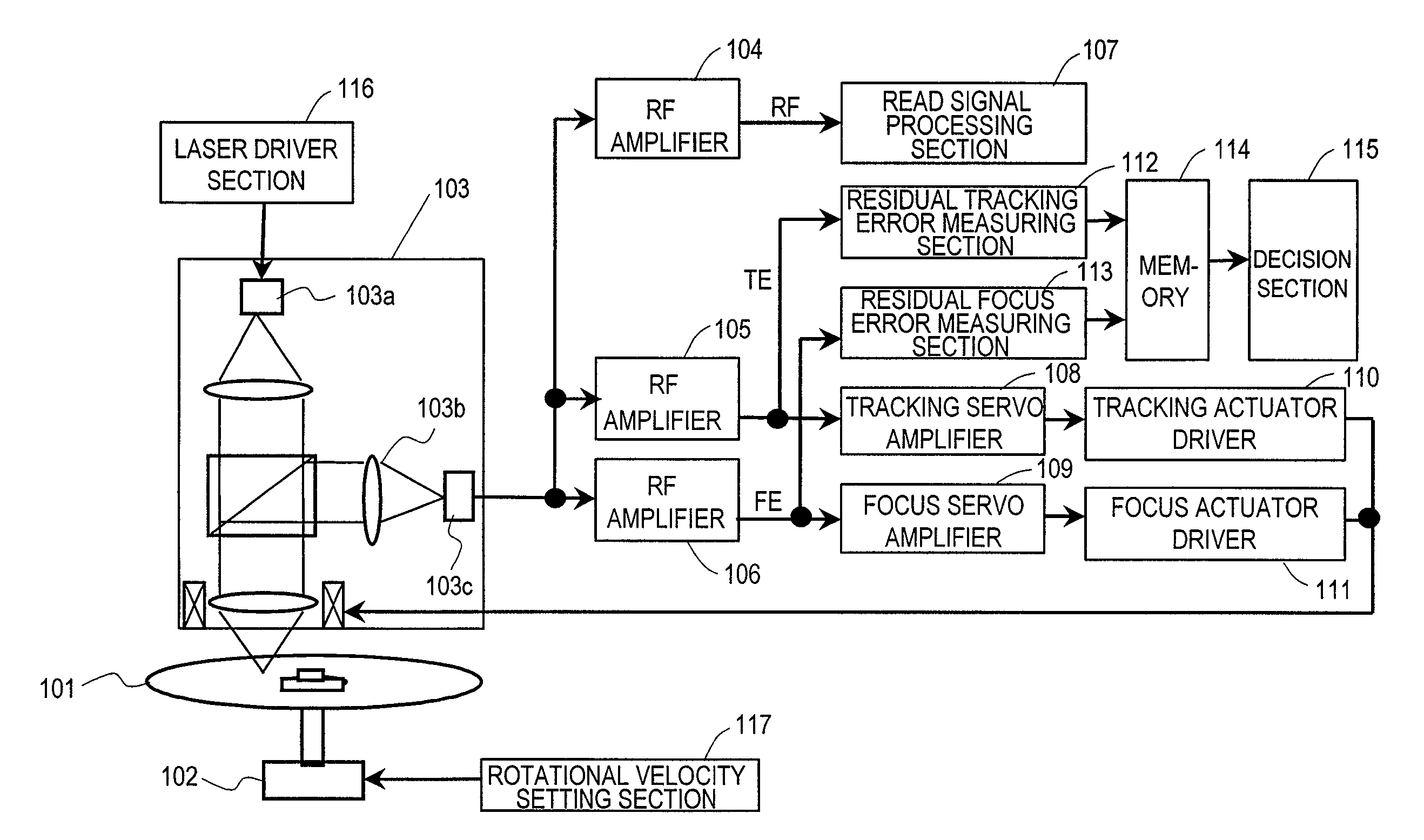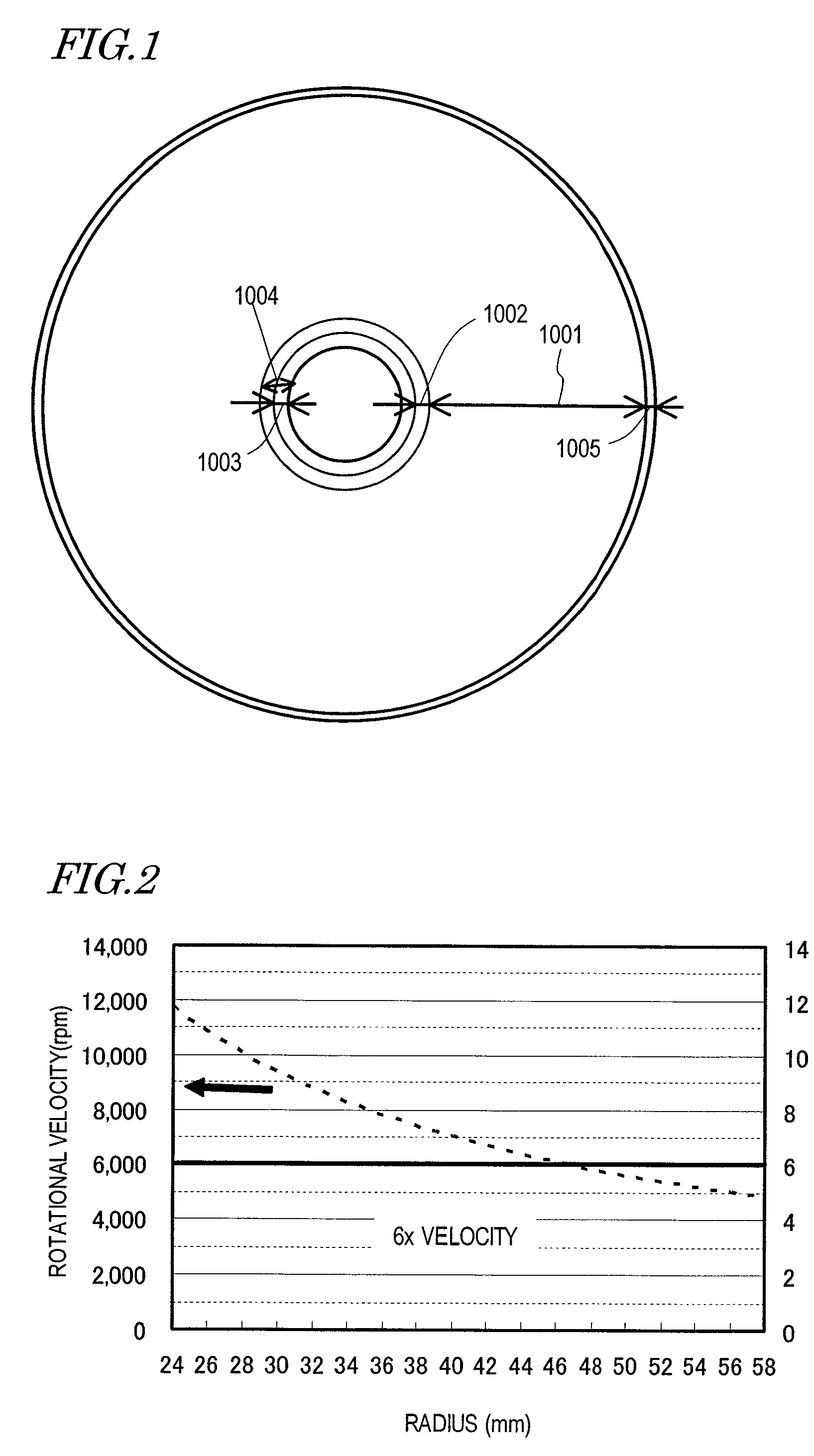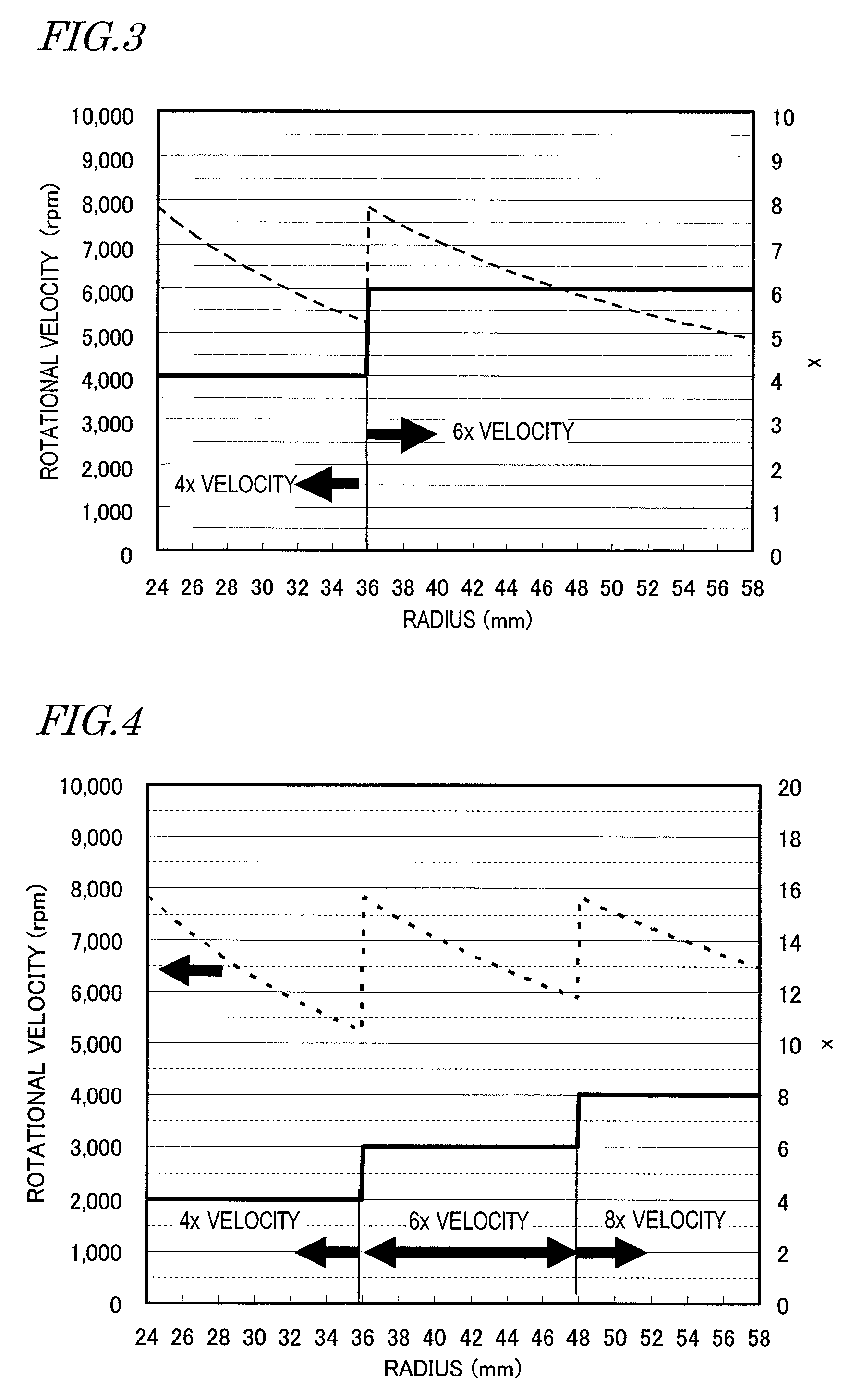Method for inspecting optical information recording medium, inspection apparatus, optical information recording medium and recording method
a technology of optical information and recording medium, which is applied in the direction of digital signal error detection/correction, instruments, recording signal processing, etc., can solve the problems of inability of optical disc drives to get the focus servo control or tracking servo control done perfectly, the position of information written on the track and the height of storage layer would change quickly, and the level of storage layer change, etc., to achieve the effect of linear velocity and rotational velocity of optical information storage medium, good ser, and low ra
- Summary
- Abstract
- Description
- Claims
- Application Information
AI Technical Summary
Benefits of technology
Problems solved by technology
Method used
Image
Examples
Embodiment Construction
[0056]FIG. 1 illustrates a format for an optical information storage medium having a data area 1001 and a PIC zone 1003, according to a preferred embodiment of the present invention. FIG. 2 shows the relation between the write location and the rotational velocity in a situation where information needs to be read or written from / on a BD-R at 6x linear velocity. The write location is indicated by the radius r. In that case, the BD-R should be rotated at a rotational velocity of approximately 12,000 rpm in the innermost portion (where r=24 mm) of the data area 1001, and at a rotational frequency of approximately 4,800 rpm in the outermost portion of the data area 1001. As can be seen from FIG. 2, however, if a read / write operation is performed on an inner range where the radius r is approximately 28 mm or less, the rotational velocity of the spindle motor exceeds 10,000 rpm.
[0057]As described above, the rotational velocity of the optical disc should not be higher than 10,000 rpm consid...
PUM
| Property | Measurement | Unit |
|---|---|---|
| linear velocity Lv2 | aaaaa | aaaaa |
| linear velocity Lv2 | aaaaa | aaaaa |
| linear velocity Lv2 | aaaaa | aaaaa |
Abstract
Description
Claims
Application Information
 Login to View More
Login to View More - R&D
- Intellectual Property
- Life Sciences
- Materials
- Tech Scout
- Unparalleled Data Quality
- Higher Quality Content
- 60% Fewer Hallucinations
Browse by: Latest US Patents, China's latest patents, Technical Efficacy Thesaurus, Application Domain, Technology Topic, Popular Technical Reports.
© 2025 PatSnap. All rights reserved.Legal|Privacy policy|Modern Slavery Act Transparency Statement|Sitemap|About US| Contact US: help@patsnap.com



